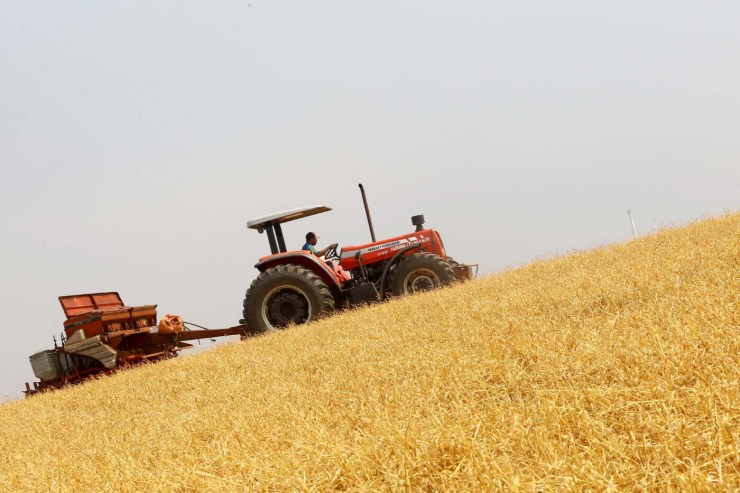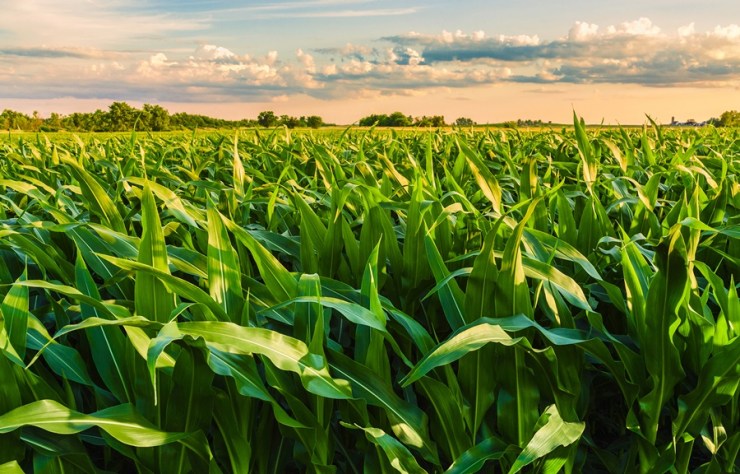The soybean harvest pace has advanced significantly, favored by the maintenance of stable weather conditions, such as sunny days, dry weather and absence of precipitation, allowing for adequate execution of the operation, as well as transportation logistics. According to the Informativo Conjuntural, released by Emater/RS-Ascar last Thursday (30), the harvested area reaches 88%, with some unevenness in the maturation of the crops persisting, although an improvement in the quality of the grains harvested in recent weeks has been observed.
The harvest of crops sown in November and early December has already been completed and producers are waiting for the areas planted from mid-December to fully mature before carrying out the operation. Among the remaining crops, 11% are at the physiological maturity stage and 1% are still in the grain filling stage.
After three weeks of scarce rainfall, grain moisture levels dropped rapidly, reaching between 12% and 13%, benefiting the natural threshing process, both in the fields and on the harvester reels. As a measure to mitigate losses, producers have extended harvesting shifts until the early evening or hired outsourced services, aiming to reduce risks arising from possible rainy periods, which would compromise the quality of the product in the field.
In regions where there was a reduction in production due to the drought, some areas leased for soybean cultivation are being renegotiated, with adjustments to contractual conditions, including the granting of discounts on lease values.
Corn

Photos: Freepik
The progress of the corn harvest has been insignificant, since, in the main areas producing the cereal, the operation was already carried out in January. Plantings remain in smaller-scale production units, where it is common for the plants to remain in the field for a long time, even after physiological maturity. This management is motivated by limitations in the storage infrastructure on the properties and by the high discounts applied by cereal producers for drying grains with high humidity.
The harvested area reached 90%. There are 6% mature or maturing areas remaining and 4% in grain filling. The dry climate and above-average temperatures for the period benefited the crops, promoting greater accumulation of degree-days and enhancing the progress of the phenological phases, especially the reproductive ones. It also contributed to greater metabolic efficiency and, consequently, to productive performance.
Corn Silage
The corn silage harvest progressed in line with the phenological evolution of the crops and the arrival of the ideal cutting point – the stage at which the plant reaches maximum green mass productivity, with an adequate proportion between grains and fibrous fraction. It is estimated that 91% of the area has been harvested; 4% are at the beginning of physiological maturity; and 5% are in grain filling.
Rice
The period without rainfall in most municipalities favored the advancement of the rice harvest, although it intensified the occurrence of grains with low moisture, resulting in high rates of cereal breakage during processing. The harvested area is estimated at 91% of the cultivated area.
As the harvest season draws to a close, the critical situation of the dams used for irrigation stands out, as their levels are very low, making it essential for heavy rainfall to return for the remainder of the fall and throughout the winter to ensure the water supply for the next harvest.
Beans 1st crop

Photo: Disclosure/OPR Archive
The first bean harvest in the State has been completed. The estimated productivity is 1,838 kg/ha in an area of 49,901 hectares.
Beans 2nd harvest
The second crop of beans grew from 20% to 23%, benefiting from the weather conditions but limited by the amount of mature areas. The productivity obtained is close to 1,300 kg/ha.
The crop continues to benefit from climate conditions, such as the predominance of stable weather, high solar radiation and mild temperatures during the night and morning, and higher temperatures throughout the day, which favored vegetative development, resulting in an increase in plant height. However, the prolonged lack of rain has reduced soil moisture levels, requiring precipitation to ensure the maintenance of production potential.
The high relative humidity in the mornings and the formation of dew caused the incidence of fungal diseases, such as anthracnose. Under these conditions, phytosanitary management becomes essential, with some preventive antifungal applications being carried out.





